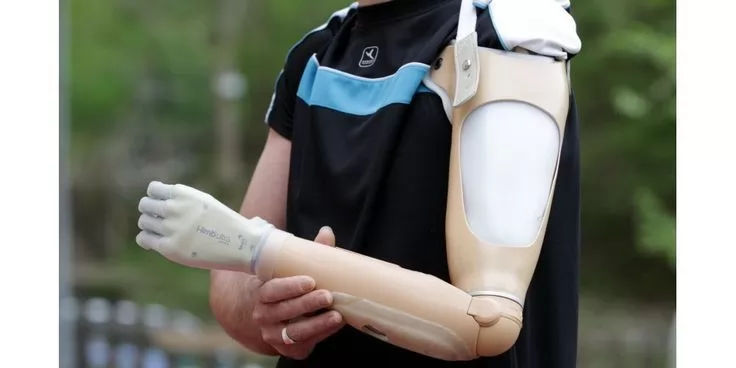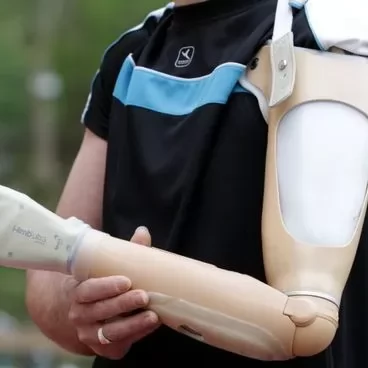Shoulder Diserticulation Prostheses
Product Categories
Shoulder Diserticulation Prostheses
These prostheses are used after the loss of the arm at the shoulder joint. Such amputations typically involve the loss of the entire upper arm, elbow, and wrist, encompassing the upper extremity. Shoulder disarticulation is a particularly challenging type of amputation that can complicate prosthesis use. The loss of the shoulder joint significantly limits the range of motion of the arms; therefore, shoulder disarticulation prostheses require higher technology and specialized designs.
Components of Shoulder Disarticulation Prosthesis:
Socket: In shoulder disarticulation prostheses, the socket is custom-designed to fit precisely on the residual body part where the amputation occurred. The socket ensures proper attachment of the prosthesis to the body and is usually secured in place with special support systems.Shoulder Joint Connection Mechanism: When the shoulder joint is lost, a connection system that replaces this joint is used. This system typically supports movements through microprocessor-controlled or mechanical means. Some systems are sensitive to the user’s muscle contractions, allowing direct control of movement.
Prosthetic Arm and Hand Components: The prosthetic arm can operate by detecting the user’s remaining muscle movements. Electronic prostheses use the electrical signals from the user’s muscles to move the arm. These prostheses offer not only gripping ability but also a more natural range of motion.
Control Systems: Shoulder disarticulation prostheses are generally controlled using electromyographic (EMG) systems, nerve stimulation systems, or microprocessor-based systems. These systems detect electrical signals in the user’s muscles and move the prosthesis accordingly.
Advantages of Shoulder Disarticulation Prostheses:
Functional Gains: These prostheses can restore lost shoulder movements and arm functions. They are particularly helpful for activities requiring gripping, holding, and fine motor skills.More Natural Movements: Microprocessor-controlled prostheses allow for more natural and controlled movements. By operating through electrical signals, they provide the user with a natural feel and greater control.
Independence: Prostheses used after shoulder disarticulation enable the user to live a more independent life. Walking, carrying objects, eating, and other basic activities become possible.


